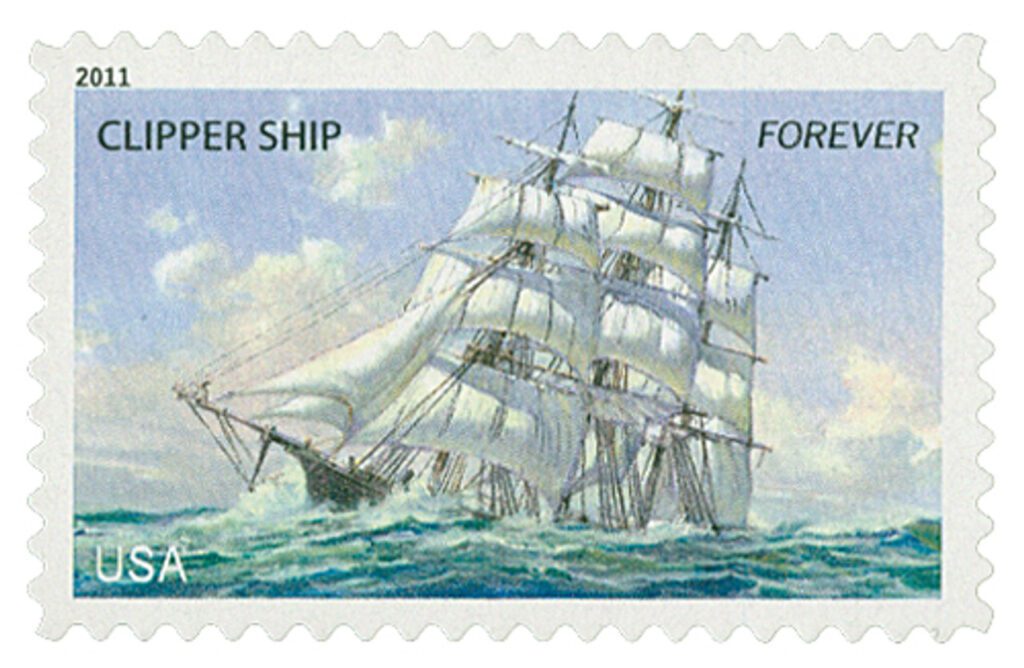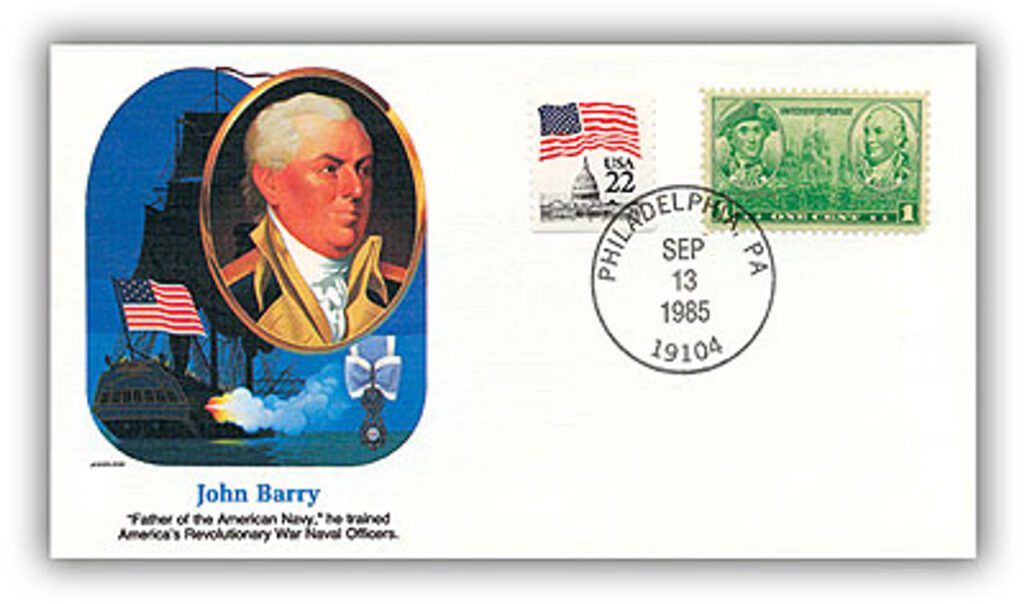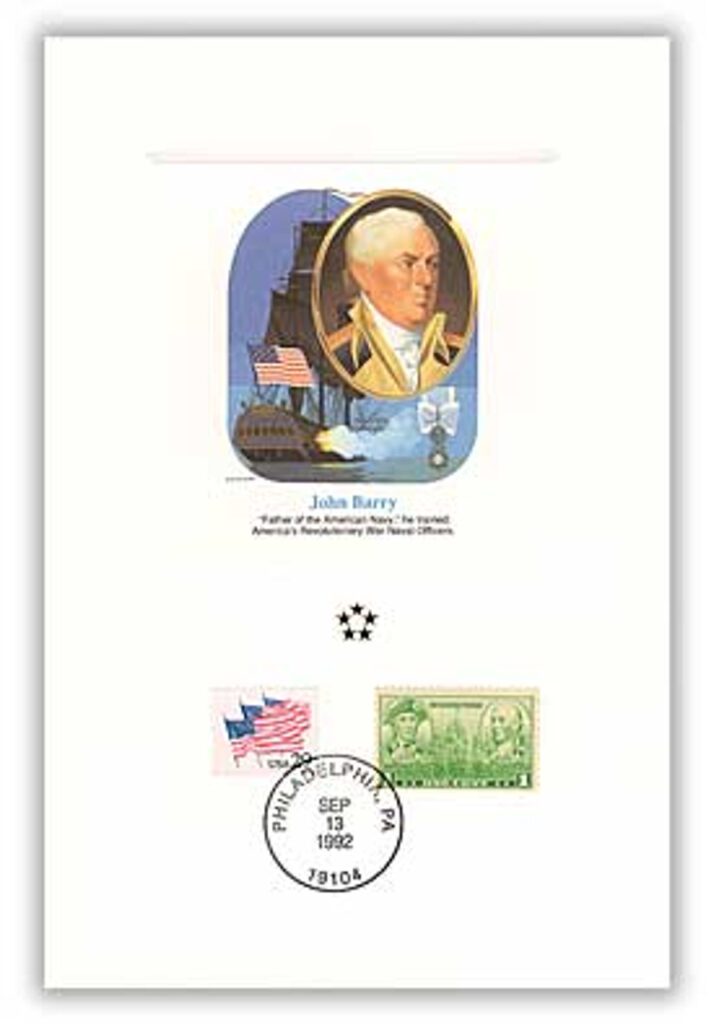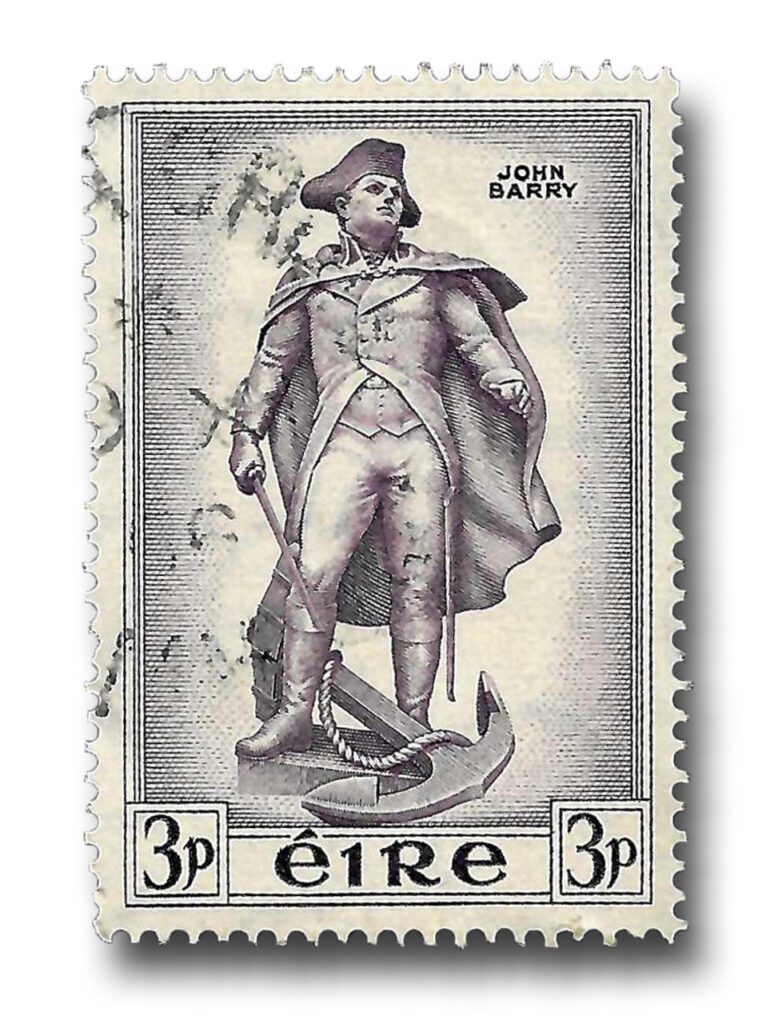Naval officer John Barry was born on March 25, 1745, in Tacumshane, Ireland.
When Barry was a child, his family was evicted from their home and moved to Rosslare on the coast of Ireland. There his uncle worked on a fishing skiff and Barry discovered his love of the sea and decided he would spend his life on the water, with his first job being a ship’s cabin boy.
Over the years, Barry rose through the ranks, eventually reaching a Mate’s rating. During his formative years, he developed a dislike for the British, especially after learning of their massacre of 3,000 Irishmen a century earlier.
By 1766, Barry had made his way to Philadelphia, where he got his first command, of the schooner Barbadoes. He adopted Philadelphia as his homeport and made frequent merchant trips between there and the West Indies. He made at least nine round trips without any incidents. In the coming years, he would command several other merchant ships. His last pre-war ship was the Black Prince, aboard which he sailed 237 miles in 24 hours, a record for the time.
Upon arriving back in Philadelphia from one of his merchant trips, Barry learned that war had broken out between the colonies and Great Britain. He was immediately tasked with outfitting the first Continental Navy ships. After that was complete, he received a captain’s commission in the Continental Navy on March 14, 1776. He was placed in command of the warship Lexington. Less than a month later, Barry led the first capture of a British warship by an American cruiser.

Later in 1776, Barry was placed in command of the Effingham, which was still under construction. During this time, he was approached by a British sympathizer who offered him 20,000 British pounds and a Royal Navy commission to turn the ship over to the British. He refused.
The following year, as the British assault on Philadelphia seemed imminent, Barry took on a new mission. Captaining a small craft, he destroyed British hay forage in the area and captured a British ship in the Lower Delaware. After that, and while his ship was still under construction, Barry offered to serve in the Continental Army. He served as an aide-de-camp with the Marines and fought at Trenton and Princeton.
By March 1778, Barry was back on the water and led a daring attack against a British fleet. With seven small craft, he captured three larger British vessels. He also later destroyed three British ships, which prevented intelligence and tools from reaching America.
Later in 1778, Barry was in command of the Raleigh. That September, the British chased him for 48 hours northward toward Maine’s Penobscot Bay. He was unfamiliar with the area and didn’t want the ship taken by the British, so he had it set on fire and led 88 of his men in rowboats to Boston.
In May 1781, Barry was commanding the Alliance near Newfoundland when two British ships attacked him. They got on either side of him and unleashed furious fire that destroyed much of the ship and wounded Barry. In spite of that, his men rallied and eventually defeated the two ships after a four-hour battle.
After the war, Barry went back to merchant life and helped open up commerce with China. Then in 1797, Barry was promoted to Commodore, though he was first appointed in 1794. He oversaw the construction of new ships, which included his own flagship, USS United States. He would command all US ships during the Quasi-War with France. He also wrote a signal book, which set the signals to be used between ships and suggested the creation of a Department of the Navy and government-operated navy yards, both of which were later adopted. Barry also trained a number of War of 1812 heroes and was called the Father of the American Navy, though other men have also been called the same. Barry died on September 12, 1803.
| FREE printable This Day in History album pages Download a PDF of today’s article. Get a binder or other supplies to create your This Day in History album. |
Discover what else happened on This Day in History.








We all seem to know of John Paul Jones’s exploits in the Navy in the Revolution. John Barry was a significant figure in the war and in the early development of the U.S. Navy. And I had never heard of him. Thank you for his story and my enlightenment.
What did Barry die from ????
Complications from asthma did him in – more information here: https://www.ushistory.org/people/commodorebarry.htm
He died from complications associated with his asthma. More information here: https://www.ushistory.org/people/commodorebarry.htm
Very interesting recap of naval history that seems to have been almost forgotten in my early education. Thank you for this interesting history lesson.
My goodness ! While I knew a little about John Paul Jones, I am astounded to learn about Naval Officer John Barry. From this article, it seems to me that he may well have been an even greater U.S. Naval Officer than our infamous John Paul Jones ! Whatever, he was a great American patriot and I appreciate learning about him for the first time. The detail in this history article is really enlightening ! Thank you … so much !!